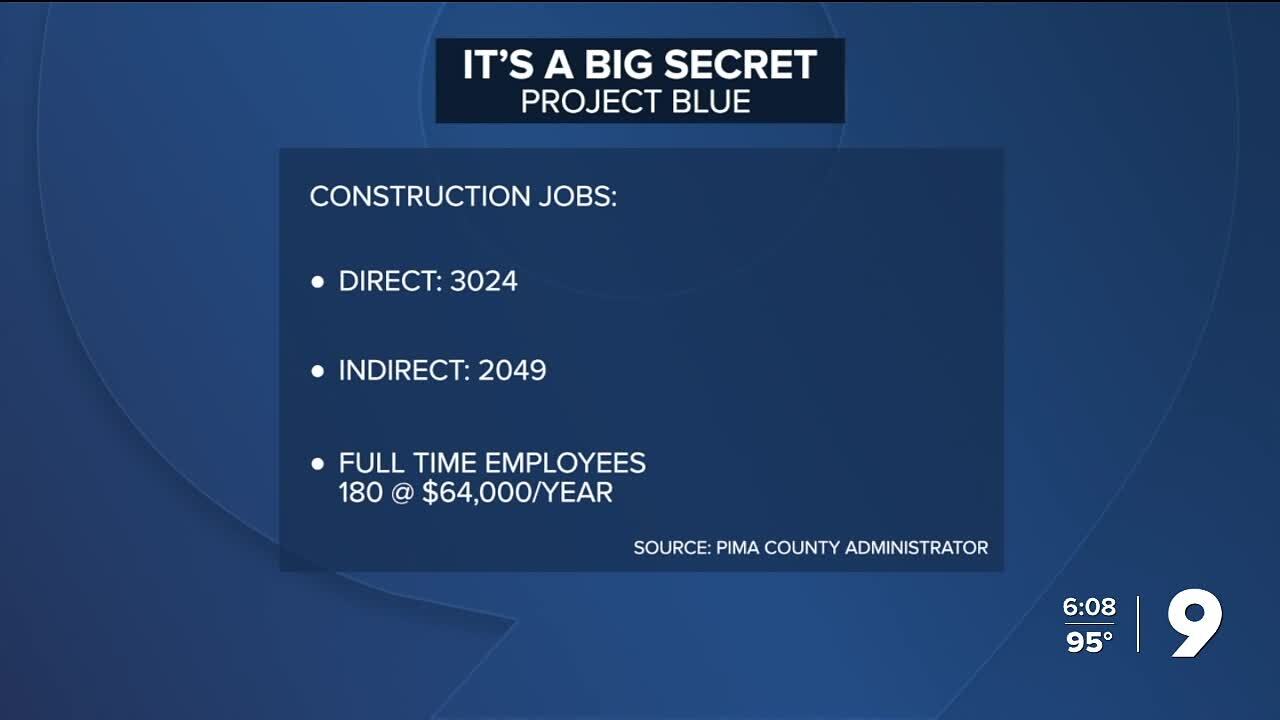TUCSON, Ariz. — If you live in or around Tucson, it's hard to avoid hearing about Project Blue. The large proposed data center would be built on 290 acres near the Pima County Fairgrounds.
The company behind the development, Beale Infrastructure held their first public meeting with the City of Tucson July 24, bringing out Southern Arizonans with concerns on the project's economic and environmental effects, including water and energy usage.
A data center is a building holding computing technology like servers and data-storage drives, so what does a room of computers have to do with water usage?

To find out, KGUN 9 spoke with Ed Hendel, co-founder of Sky Island AI, an AI consulting firm based in Tucson.
“The internet is growing," he said. "Everyone takes photos constantly. A-I is a major source of storage and energy."
As part of the AI industry, Hendel isn't opposed to data centers. He says he recognizes the need to build more of them in the United States, but says he has hold ups about one in the Southern Arizonan desert.
“Computers get hot. They run hot," Hendel explained. Especially in data centers when you have an entire building full of computers, and you can’t just put them in a nice, comfortable air-conditioned room."
He says that's where the water comes in. He says data centers can use water to cool the rows upon rows of technology.
"The water flows past the servers, absorbs the heat, evaporates, and kind of takes the heat out of the computer so the computer can continue running.”
How much water does it take to run a data center in the desert?
Sky Island AI created a dashboard showing that some data centers in United States use millions of gallons of water a day. A Google data center in Mesa, AZ uses a minimum allowance of about one million gallons of water each day.
"We’re just trying to show the public the full scope of what we’re signing up for here,” Hendel said. "Is this worth it? We did not come with an agenda of whether we think it's worth it or not. I have my personal views, but the goal of the dashboard was to be very objective and allow you to play with different scenarios."
The city of Tucson says Project Blue will not deplete Tucson's water supplies for the community, saying that after the first two years or so, the project will use reclaimed water, eventually transitioning to a "net positive water" state where they plan to "directly invest in projects and/or fund Tucson Water efforts to conserve or secure new water resources to offset their consumptive use, gallon-for-gallon, and more."
Some opponents of the project are unsure of how that would work since the developers or the city haven't released a specific replenishment method.
That's concerning to those in Tucson nonprofit Watershed Management Group.
"This is a really important issue to us," said Cody Calamaio, WMG's development and communications manager. "These data centers are coming in with, not only limited information but a huge water impact."
The group is holding a virtual meeting Wednesday to tackle definitions and descriptions of terms used in Project Blue meetings.
Calamaio says the group will be speaking up for Arizona's rivers which they're concerned may be affected.
"We feel it's our responsibility," she said.
But water is only one piece of the Project Blue puzzle. On the Sky Island AI dashboard, visitors can also see potential energy and economic impacts.
“You can play with it and determine for yourself if it’s a good trade off," Hendel said. "That was our goal.”
Tucson city leaders have scheduled two more Project Blue meetings:
- Thursday, July 31, 2025
5-7 p.m.
Virtual Meeting - Monday, Aug. 4, 2025
5-7 p.m.
Tucson Convention Center (Grand Ballroom)
260 S. Church Ave.




